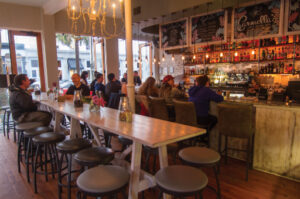Charleston’s Hidden History: The Journey to Preserve Black Burial Grounds
Charleston, a city rich in history and culture, is now focusing on an often-overlooked aspect of its past—its African burial grounds. As October’s warm sun filtered through a mix of sunshine and clouds, a small gathering took place at the Heriot Street Cemetery, a significant yet mostly undiscovered resting place for Black residents dating back to the 1860s.
On a peaceful Wednesday afternoon, researchers from the Anson Street African Burial Ground project stood under the shade of tall mulberry trees, discussing their ongoing efforts to create an interactive map and website dedicated to burial sites across the Charleston area. With a population of nearly 2,000 people estimated to rest in the half-acre cemetery, many may not even be aware this historic site exists.
Community Engagement Driving Awareness
La’Sheia Oubre, a dedicated researcher for the project, shared insights into how they’re involving the community to shine a light on these sacred spaces. “We’ve been reaching out to local residents and encouraging them to contribute what they know,” Oubre explained with enthusiasm as she reminisced about her visits to the cemetery.
Beneath the rustling leaves and a gentle breeze, Joanna Gilmore, another researcher involved in the mapping project, detailed how crucial it has been to gather historical context from community members. “People are surprised to learn about these burial grounds. They deserve to know that this cemetery is here and part of our heritage,” she said passionately.
A Tool for Preservation
The Heriot Street Cemetery is now part of a larger initiative that documents nearly 200 burial grounds. Funded by a generous $50,000 National Park Service African American Civil Rights Grant, this project not only highlights the locations but also emphasizes the stories behind the lives that came before. Brian Turner, president and CEO of the Preservation Society of Charleston, articulated the mission clearly, “The goal is for the map to become a point of pride and protection for these historic sites.”
Understanding Historical Challenges
Due to historical segregation, Black communities in Charleston historically faced limited access to burial lands, forcing many of their burial sites to be tucked away, often in close quarters. “Many were buried stacked on top of each other due to space constraints,” shared Turner, as the weight of history seemed to hang in the air.
Despite the hardship, the rigorous outreach from various community groups has led to a resurgence in recognition and reverence for spaces like Heriot Street. What would have been a forgotten site is now part of a larger conversation about African descendant communities and their rightful place in Charleston’s rich tapestry. Through community-initiated efforts, the Nelliefield Creek Cemetery has emerged as a beacon of hope, showing how communities can come together to restore forgotten histories.
Continuing the Fight for Memory and Respect
Oubre was quick to remind everyone that while their two-year project is officially complete, the mission to protect and promote these burial grounds is ongoing. “We can keep adding to the map as we gather more information,” she said, underscoring the idea that this work is not just about mapping land, but about honoring lives and legacies.
Pastor Donnell Hopkins, who has been actively involved in restoring the Nelliefield Creek Cemetery, expressed a sentiment echoed by many: “This isn’t just about cleaning headstones; it’s about ensuring these souls are remembered.” The church and local historic societies are diligently working to create a dedicated space, with plans to add fences and benches for future visitors.
A Community United in History
With the evening sun casting long shadows across the cemetery, the atmosphere was reflective and hopeful. Stories echoed in the air, as community voices united in shared history could be heard. “These spaces deserve honor and respect,” Oubre concluded. “It’s about reclaiming our shared history, one step at a time.”
In Charleston, as busy streets buzz by and lives move at breakneck speed, it’s heartening to know that beneath the surface, passionate efforts are being made to ensure that the history of all its residents—especially those who have been overlooked—continues to be told.



























